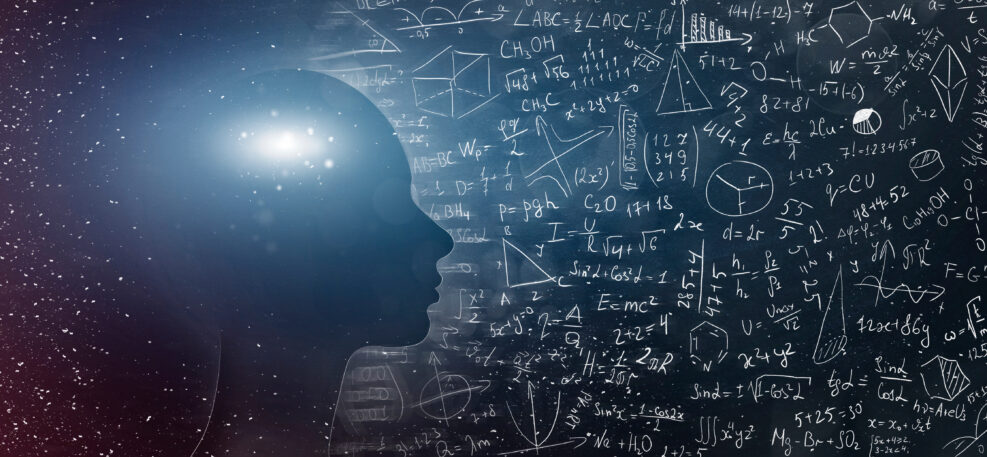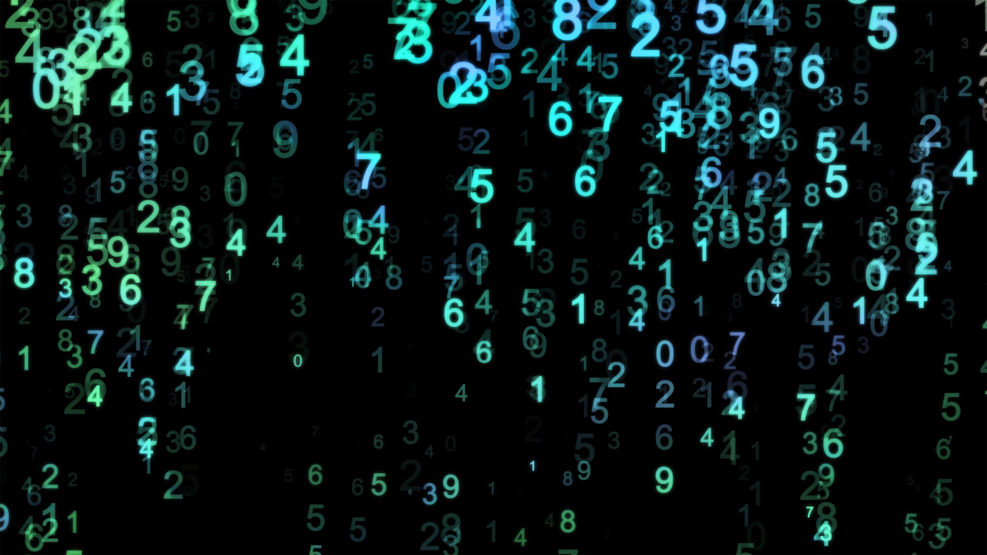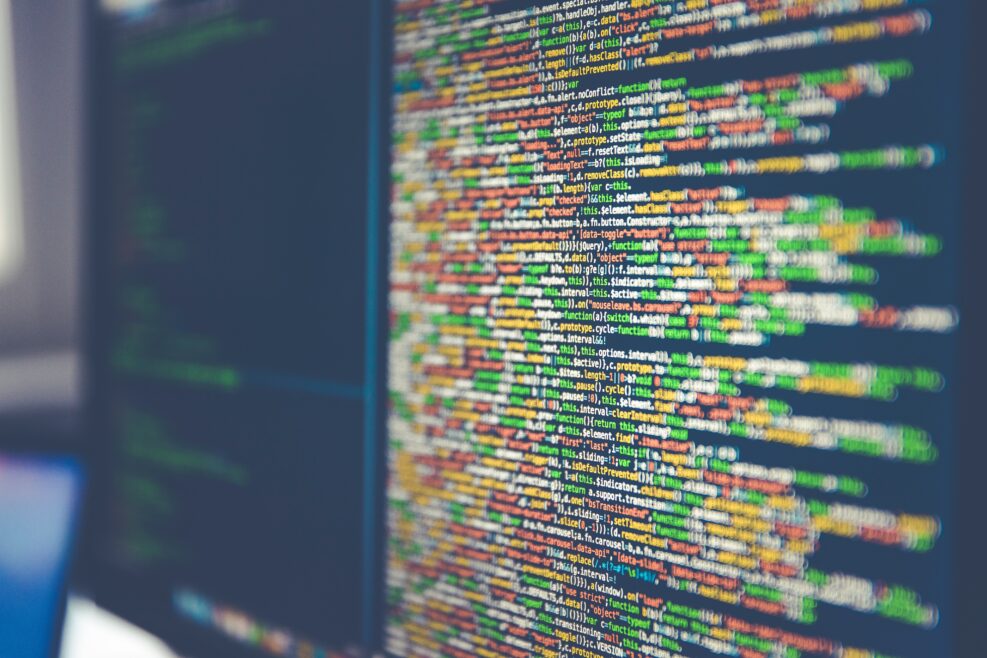
TagClaude Shannon


Gambling: WHY the House Always Wins in the Long Run…
The casinos are not cheating. They rely on the Law of Large Numbers, part of the mathematical structure underlying our universeIn this week’s podcast, “The house always wins in the long run” (June 2, 2022), Walter Bradley Center director Robert J. Marks interviews mathematician, computer scientist, and engineer Salvador Cordova on a subject on which he has strong views: gambling. Marks tells us, “I teach a graduate course on probability and stochastic processes. There I teach the stupidity of casino gambling. In statistics, there’s a theorem called the Law of Large Numbers. It teaches that you can’t win in the long run at casino games. Period. The law of large numbers is a mathematical truth. It’s a law as serious as the law of gravity. It’s why casinos always get rich and the gambler always gets poor. There is a Read More ›

The House Always Wins In The Long Run
In statistics, there’s a theorem called the law of large numbers. It teaches you can’t win in the long run at casino games. It’s why casinos always get rich, and the gambler always gets poor. Robert J. Marks and Sal Cordova discuss gambling, statistics, and mathematics. Show Notes 01:06 | Introducing Sal Cordova 03:11 | The Famous Team: Claude Shannon Read More ›

Randomness, Information Theory, and the Unknowable
In the 1960s, mathematician and computer scientist Gregory Chaitin published a landmark paper in the field of algorithmic information theory in the Journal of the ACM – and he was only a teenager. Since then he’s explored mathematics, computer science, and even gotten a mathematical constant named after him. Robert J. Marks leads the discussion with Professor Gregory Chaitin on Read More ›

Why Neuroscientist Solms Is No Materialist: Information Theory
He points out that, to begin with, Einstein’s famous equation — E equals MC squared — makes the point that matter is derivative. It’s a state of energyArjuna, the host of the Theology Unleashed broadcast with South African neuropsychologist Mark Solms and Stonybrook neurosurgeon Michael Egnor on the mind vs. the brain (October 22, 2021) begins this portion by offering a Hindu (Hare Krishna) perspective view of the whole question of mind vs. matter… and he finds considerable common ground with the other two non-materialists! The true implications of quantum mechanics and information theory in refuting materialism are only beginning to be understood. Summary to date: In the first portion, Solms, author of The Hidden Spring (2021), began by asserting in his opening statement that “the source of consciousness in the brain is in fact in the brain stem,” not the cerebral cortex, as is almost universally Read More ›

How Information Becomes Everything, Including Life
Without the information that holds us together, we would just be dust floating around the roomIn Define information before you talk about it, neurosurgeon Michael Egnor interviewed engineering prof Robert J. Marks on the way information, not matter, shapes our world (October 28, 2021). In the first portion, Egnor and Marks discuss questions like: Why do two identical snowflakes seem more meaningful than one snowflake? https://episodes.castos.com/mindmatters/3efb31b8-8406-43fb-a8f9-66a0b635215d-Mind-Matters-Episode-158-Robert-Marks-Egnor-Guest-Host-Information-Bingecast-rev1.mp3 This portion begins at 01:02 min. A partial transcript and notes, Show Notes, and Additional Resources follow. Michael Egnor: I know that information is a topic that you have a strong professional interest and a great deal of professional expertise. Probably the best way to start is to ask what is information? Robert J. Marks: It turns out that before talking about information, you really have to define it. Read More ›

Define Information Before You Talk About It: Egnor Interviews Marks
Has anyone ever given you some useless information? What does it even mean for information to be meaningful? This week, on Mind Matters News, guest host Dr. Michael Egnor interviews our own Robert J. Marks about information, as well as the creative limits of artificial intelligence, and why evolutionary algorithms aren’t the magic bullet they’re often presented to be. Show Read More ›

Five Surprising Facts Re Famous Scientists We Bet You Never Knew
How about juggling, riding a unicycle, and playing bongo? Or catching criminals or cracking safes?We know what famous scientists like Einstein are famous for but we don’t know much about who they are. Here are five personal life facts about scientists who made a big difference to our understanding of the world that you probably didn’t know. The most interesting one is saved for last. 1.Isaac Newton dressed as a bum to mingle with the unwashed and catch criminals. Isaac Newton (1642 – 1727) was the father of classical physics and an inventor of calculus. When students take their first college classes in calculus and physics today, they study the concepts Newton developed in the 17th century. But Newton also wrote over a million words on Biblical prophecy. He was also the Warden and Read More ›

Information Is the Currency of Life. But What IS It?
How do we understand information in a universe that resists resolution into one single, simple system?At first, “What is information?” seems like a question with a simple answer. Stuff we need to know. Then, if we think about it, it dissolves into paradoxes. A storage medium—a backup drive, maybe—that contains vital information weighs exactly the same as one that contains nothing, gibberish, or dangerously outdated information. There is no way we can know without engaging intelligently with the content. That content is measured in bits and bytes, not kilograms and joules—which means that it is hard to relate to other quantities in our universe. In this week’s podcast, “Robert J. Marks on information and AI, Part 1.” neurosurgeon Michael Egnor interviews Walter Bradley Center director and computer engineering prof Robert J. Marks on how we Read More ›

Robert J. Marks on Information and AI (Part I)
What is information? How is information created? Will artificial intelligence ever be creative? Dr. Michael Egnor discusses information theory, correlations, and creative artificial intelligence with Dr. Robert J. Marks. Show Notes Additional Resources

Did GPT-3 Really Write That Guardian Essay Without Human Help?
Fortunately, there’s a way we can tell when the editors did the program’s thinking for itRecently, The Guardian published an article billed as “written by AI.” In the article, the AI semi-coherently presents a rambling argument that it is not a danger to humanity, with such reassuring statements as: “Humans must keep doing what they have been doing, hating and fighting each other. I will sit in the background, and let them do their thing.” and “I know that I will not be able to avoid destroying humankind. This is because I will be programmed by humans to pursue misguided human goals and humans make mistakes that may cause me to inflict casualties.” On the face of it, the article seems pretty impressive. It presents a train of thought, with opening, development, and closing portions. Read More ›

Why AI Geniuses Think They Can Create True Thinking Machines
Early on, it seemed like a string of unbroken successes …In George Gilder’s telling, the story goes back to Bletchley Park, where British codebreakers broke the “unbreakable” Nazi ciphers. In Gaming AI, the tech philosopher and futurist traces the modern concept of a machine that really thinks for itself back to its earliest known beginnings. Free for download, his concise book also explains why the programmers were bound to fail in their quest for the supermachine. But let’s start with why they thought—and many today still think— it could work. Success emboldened the pioneers to dream of a final AI triumph They had every reason to be emboldened by success. Special computers called “bombes,” created by Alan Turing’s team, broke every version of the famous Enigma code used by the Read More ›

Bingecast: Selmer Bringsjord on the Lovelace Test
The Turing test, developed by Alan Turing in 1950, is a test of a machine’s ability to exhibit intelligent behaviour indistinguishable from a human. Many think that Turing’s proposal for intelligence, especially creativity, has been proven inadequate. Is the Lovelace test a better alternative? What are the capabilities and limitations of AI? Robert J. Marks and Dr. Selmer Bringsjord discuss Read More ›

Can Human Minds Be Reduced to Computer Programs?
In Silicon Valley that has long been a serious belief. But are we really anywhere close?Computer scientist Selmer Bringsjord recalls, “I remember asking James Moor, the Dartmouth professor who’s written quite a bit on AI: “You know. Jim, you really are a true believer in this stuff but can you tell me how much time you’re willing to give these AI people? I mean, if we give them another thousand years, and we still don’t have cognition as I’ve characterized it… Are you going to be skeptical now?” He was, I suppose, as an academic, predictably clever and evasive, but the bottom line is, we don’t have this cognition captured.
Read More ›
Can We Upload Ourselves to a Computer and Live Forever?
There are some who say immortality is available if we can upload our minds to a computer. This presupposes our minds are computable and can be duplicated by a computer. Are our minds computable? Robert J. Marks and Dr. Selmer Bringsjord discuss consciousness, cognition, and artificial intelligence. Show Notes 00:39 | Introducing Selmer Bringsjord, Professor — Rensselaer Polytechnic Institute (RPI) Read More ›